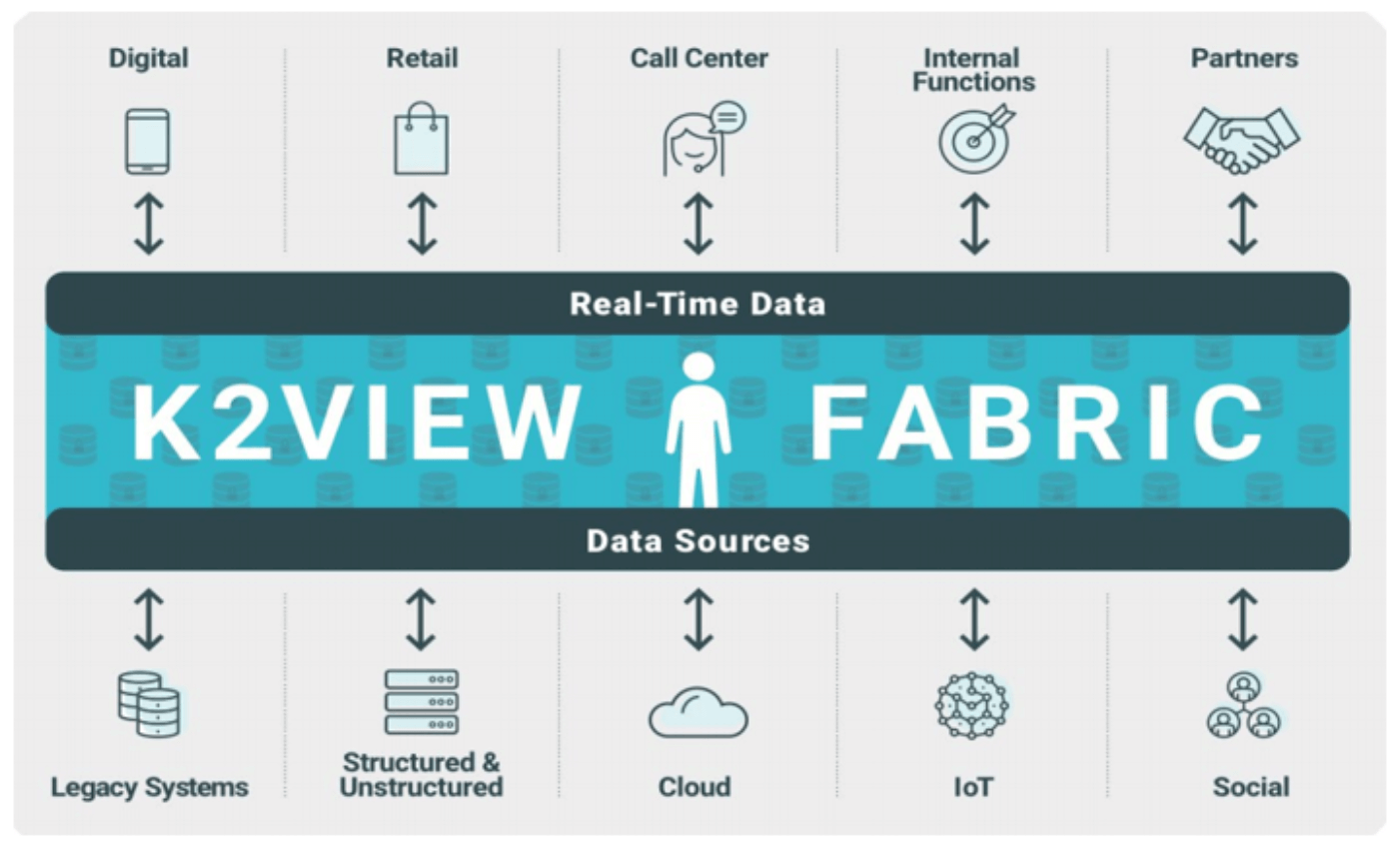What is Fabric?
Data Fabric is a data management platform that provides access to data where and when you need it. Fabric solves real-time operational needs for data that is stored and handled in different systems, technologies or geo-locations.
Acting as a new data layer above existing data sources, Fabric controls data using a patented Digital Entity centric approach offering multiple and diverse built-in integrated data management capabilities for end-to-end management of the data lifecycle.

What is a Digital Entity?
A Digital Entity is a digital version of a person, place or thing and is usually correlated to a business entity like a customer, order, patient, product or household. Once implemented, Fabric creates a micro data lake physical database for each Digital Entity instance.
Key Fabric Features
- Modern and distributed architecture that provides linear scalability and proven fault-tolerance on commodity hardware and cloud infrastructures.
- Data replication capabilities across nodes and datacenters that provide customers with the peace of mind of knowing they can survive node failures or regional outages.
- Patented Digital Entity based MicroDB, a data lake for each Digital Entity instance that provides unparalleled performance with standard (ANSI) SQL queries.
- Patented data security approach, every MicroDB is encrypted individually, providing the peace of mind that massive data breaches are prevented.
- Unique near-data-logic architecture that enables millisecond performance and throughput for APIs.
- Built-in integrated drag-and-drop data management capabilities to enable a time-to-market that is measured in days to weeks and not weeks to months.
To summarize, Fabric architecture yields significant savings in computing, power and storage which makes it a perfect data platform for mission-critical, operational and real-time use cases.
Fabric Use Cases
Fabric is a great solution for:
- Anything 360, like customer, order, device, server, car, credit-card or patient.
- Micro services.
- Customer data hub.
- ML / AI inference.
- Real-time data processing and correlation.
Note that Fabric is a less appropriate solution for storing and managing data that requires cross Digital Entities like reports, BI, analytics, ML / AI training and batch data processing.
Getting Started
Learn about Main Fabric Platform Modules:
What is Fabric?
Data Fabric is a data management platform that provides access to data where and when you need it. Fabric solves real-time operational needs for data that is stored and handled in different systems, technologies or geo-locations.
Acting as a new data layer above existing data sources, Fabric controls data using a patented Digital Entity centric approach offering multiple and diverse built-in integrated data management capabilities for end-to-end management of the data lifecycle.

What is a Digital Entity?
A Digital Entity is a digital version of a person, place or thing and is usually correlated to a business entity like a customer, order, patient, product or household. Once implemented, Fabric creates a micro data lake physical database for each Digital Entity instance.
Key Fabric Features
- Modern and distributed architecture that provides linear scalability and proven fault-tolerance on commodity hardware and cloud infrastructures.
- Data replication capabilities across nodes and datacenters that provide customers with the peace of mind of knowing they can survive node failures or regional outages.
- Patented Digital Entity based MicroDB, a data lake for each Digital Entity instance that provides unparalleled performance with standard (ANSI) SQL queries.
- Patented data security approach, every MicroDB is encrypted individually, providing the peace of mind that massive data breaches are prevented.
- Unique near-data-logic architecture that enables millisecond performance and throughput for APIs.
- Built-in integrated drag-and-drop data management capabilities to enable a time-to-market that is measured in days to weeks and not weeks to months.
To summarize, Fabric architecture yields significant savings in computing, power and storage which makes it a perfect data platform for mission-critical, operational and real-time use cases.
Fabric Use Cases
Fabric is a great solution for:
- Anything 360, like customer, order, device, server, car, credit-card or patient.
- Micro services.
- Customer data hub.
- ML / AI inference.
- Real-time data processing and correlation.
Note that Fabric is a less appropriate solution for storing and managing data that requires cross Digital Entities like reports, BI, analytics, ML / AI training and batch data processing.
Getting Started
Learn about Main Fabric Platform Modules:




